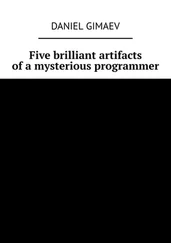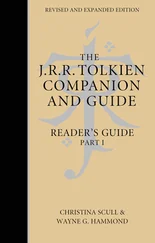Standard Template Library Programmer's Guide
Здесь есть возможность читать онлайн «Standard Template Library Programmer's Guide» весь текст электронной книги совершенно бесплатно (целиком полную версию без сокращений). В некоторых случаях можно слушать аудио, скачать через торрент в формате fb2 и присутствует краткое содержание. Жанр: Программирование, Справочники, на английском языке. Описание произведения, (предисловие) а так же отзывы посетителей доступны на портале библиотеки ЛибКат.
- Название:Standard Template Library Programmer's Guide
- Автор:
- Жанр:
- Год:неизвестен
- ISBN:нет данных
- Рейтинг книги:4 / 5. Голосов: 1
-
Избранное:Добавить в избранное
- Отзывы:
-
Ваша оценка:
- 80
- 1
- 2
- 3
- 4
- 5
Standard Template Library Programmer's Guide: краткое содержание, описание и аннотация
Предлагаем к чтению аннотацию, описание, краткое содержание или предисловие (зависит от того, что написал сам автор книги «Standard Template Library Programmer's Guide»). Если вы не нашли необходимую информацию о книге — напишите в комментариях, мы постараемся отыскать её.
Standard Template Library Programmer's Guide — читать онлайн бесплатно полную книгу (весь текст) целиком
Ниже представлен текст книги, разбитый по страницам. Система сохранения места последней прочитанной страницы, позволяет с удобством читать онлайн бесплатно книгу «Standard Template Library Programmer's Guide», без необходимости каждый раз заново искать на чём Вы остановились. Поставьте закладку, и сможете в любой момент перейти на страницу, на которой закончили чтение.
Интервал:
Закладка:
The fact that the value type of an Associative Container is not Assignable has an important consequence: associative containers cannot have mutable iterators. This is simply because a mutable iterator (as defined in the Trivial Iterator requirements) must allow assignment. That is, if i is a mutable iterator and t is an object of i 's value type, then *i = t must be a valid expression.
In Simple Associative Containers, where the elements are the keys, the elements are completely immutable; the nested types iterator and const_iterator are therefore the same. Other types of associative containers, however, do have mutable elements, and do provide iterators through which elements can be modified. Pair Associative Containers, for example, have two different nested types iterator and const_iterator . Even in this case, iterator is not a mutable iterator: as explained above, it does not provide the expression *i = t . It is, however, possible to modify an element through such an iterator: if, for example, i is of type map , then (*i).second = 3 is a valid expression.
In some associative containers, Unique Associative Containers, it is guaranteed that no two elements have the same key. [2] In other associative containers, Multiple Associative Containers, multiple elements with the same key are permitted.
Forward Container, Default Constructible
One new type is introduced, in addition to the types defined in the Forward Container requirements.
| Key type | X::key_type |
The type of the key associated with X::value_type . Note that the key type and value type might be the same. |
XA type that is a model of Associative Container
aObject of type X
tObject of type X::value_type
kObject of type X::key_type
p, qObject of type X::iterator
If a is an associative container, then p is a valid iterator in a if it is a valid iterator that is reachable from a.begin() .
If a is an associative container, then [p, q) is a valid range in a if [p, q) is a valid range and p is a valid iterator in a .
In addition to the expressions defined in Forward Container, the following expressions must be valid.
| Name | Expression | Return type |
|---|---|---|
| Default constructor | X() X a; |
|
| Erase key | a.erase(k) |
size_type |
| Erase element | a.erase(p) |
void |
| Erase range | a.erase(p, q) |
void |
| Clear | a.clear() |
void |
| Find | a.find(k) |
iterator if a is mutable, otherwise const_iterator |
| Count | a.count(k) |
size_type |
| Equal range | a.equal_range(k) |
pair if a is mutable, otherwise pair . |
| Name | Expression | Precondition | Semantics | Postcondition |
|---|---|---|---|---|
| Default constructor | X() X a; |
Creates an empty container. | The size of the container is 0 . | |
| Erase key | a.erase(k) |
Destroys all elements whose key is the same as k , and removes them from a . [2] The return value is the number of elements that were erased, i.e. the old value of a.count(k) . | a.size() is decremented by a.count(k) . a contains no elements with key k . | |
| Erase element | a.erase(p) |
p is a dereferenceable iterator in a . | Destroys the element pointed to by p , and removes it from a . | a.size() is decremented by 1. |
| Erase range | a.erase(p, q) |
[p, q) is a valid range in a . | Destroys the elements in the range [p,q) and removes them from a . | a.size() is decremented by the distance from i to j . |
| Clear | a.clear() |
Equivalent to a.erase(a.begin(), a.end()) | ||
| Find | a.find(k) | Returns an iterator pointing to an element whose key is the same as k , or a.end() if no such element exists. | Either the return value is a.end() , or else the return value has a key that is the same as k . | |
| Count | a.count(k) |
Returns the number of elements in a whose keys are the same as k . | ||
| Equal range | a.equal_range(k) | Returns a pair P such that [P.first, P.second) is a range containing all elements in a whose keys are the same as k . [3] If no elements have the same key as k , the return value is an empty range. | The distance between P.first and P.second is equal to a.count(k) . If p is a dereferenceable iterator in a , then either p lies in the range [P.first, P.second) , or else *p has a key that is not the same as k . |
Average complexity for erase key is at most O(log(size()) + count(k)) .
Average complexity for erase element is constant time.
Average complexity for erase range is at most O(log(size()) + N) , where N is the number of elements in the range.
Average complexity for count is at most O(log(size()) + count(k)) .
Average complexity for find is at most logarithmic.
Average complexity for equal range is at most logarithmic.
| Contiguous storage | All elements with the same key are adjacent to each other. That is, if p and q are iterators that point to elements that have the same key, and if p precedes q , then every element in the range [p, q) has the same key as every other element. |
| Immutability of keys | Every element of an Associative Container has an immutable key. Objects may be inserted and erased, but an element in an Associative Container may not be modified in such a way as to change its key. |
• set
• multiset
• hash_set
• hash_multiset
• map
• multimap
• hash_map
• hash_multimap
[1] The reason there is no such mechanism is that the way in which elements are arranged in an associative container is typically a class invariant; elements in a Sorted Associative Container, for example, are always stored in ascending order, and elements in a Hashed Associative Container are always stored according to the hash function. It would make no sense to allow the position of an element to be chosen arbitrarily.
Читать дальшеИнтервал:
Закладка:
Похожие книги на «Standard Template Library Programmer's Guide»
Представляем Вашему вниманию похожие книги на «Standard Template Library Programmer's Guide» списком для выбора. Мы отобрали схожую по названию и смыслу литературу в надежде предоставить читателям больше вариантов отыскать новые, интересные, ещё непрочитанные произведения.
Обсуждение, отзывы о книге «Standard Template Library Programmer's Guide» и просто собственные мнения читателей. Оставьте ваши комментарии, напишите, что Вы думаете о произведении, его смысле или главных героях. Укажите что конкретно понравилось, а что нет, и почему Вы так считаете.











